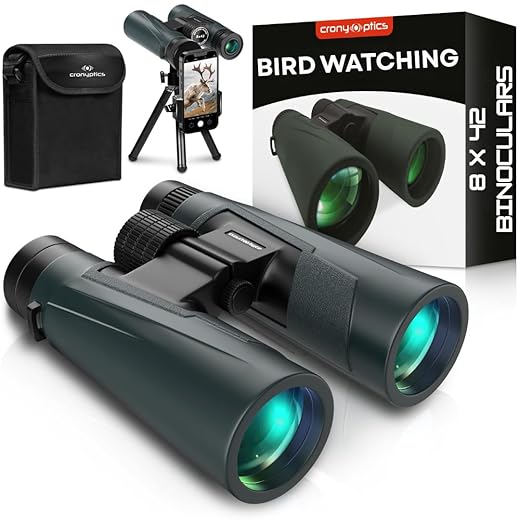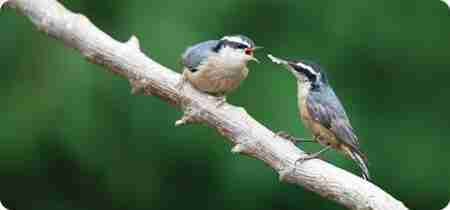You are about to venture on an enlightening journey, exploring the mysterious world of raptors and their habitat preferences. The article “Understanding the Factors that Determine a Raptor’s Preferred Habitat” pulls back the curtain revealing the intricacies behind the choice a raptor makes for its ideal living environment.
Diving into detailed analyses backed by sound science, it unpacks the various factors that mold habitat selection in these magnificent creatures of the skies. Prepare to have your knowledge, and appreciation, of these fascinating predators broadened and deepened.

Understanding Raptors
Understanding the world of raptors is crucial as it provides insights into their behavior, habitats, and importance in the environment. This article provides a comprehensive discussion about raptors, their species, incisive attributes, role in the ecosystem, habitat preferences, and effects of human activities on their ecosystem.
Definition and Classification of Raptors
Raptors, also known as birds of prey, are a classification of birds that specialize in hunting and feeding on other animals. The term ‘raptor’ is derived from the Latin word ‘rapere’ which means to seize or capture. This group of birds is characterized by strong, sharp talons for capturing prey, hooked beaks to tear apart their food, and keen eyesight to spot their next meal from afar.
Different Species of Raptors
There is a wide range of species that fall under the raptor category. These include eagles, hawks, ospreys, falcons, kites, and owls among others. Each species has unique characteristics, behaviors, and adaptations that enable them to survive in particular environments.
The Importance of Raptors in the Ecosystem
Raptors play a vital role in maintaining the balance of the ecosystem. As top predators, they help control populations of other animals, particularly rodents and small mammals, thus preventing overpopulation. Additionally, they also assist in removing sick and injured animals, helping to prevent the spread of diseases.
Physical Attributes of Raptors that Influence Habitat Preferences
Raptors possess various physical attributes that have significant impacts on their habitat preferences.
Adaptations for Hunting and Feeding in Different Environments
Different species of raptors have developed unique adaptations that enhance their ability to hunt and feed in different environments. For instance, Peregrine Falcons are known for their incredible speed, which helps them catch their prey mid-air, while owls have developed nearly silent flights, aiding them in catching their prey unaware during the night.
Size Variations among Species and Impact on the Habitat
Size variations among raptor species correspond to different habitat preferences. Larger species like eagles and vultures tend to inhabit vast territories with ample food supplies like mountains and coastal areas, while smaller species like kestrels and sparrowhawks are more adaptable and can be found in a range of habitats, including urban areas.
Wingspan and Flight Capabilities Influence on the Habitat
Wingspan and flight abilities are other crucial factors determining a raptor’s preferred habitat. Birds with long, broad wings, such as vultures and eagles, are suited for soaring over open landscapes, while those with short, rounded wings like hawks and falcons are more adapted to forested areas where quick maneuverability is needed.
Geographical Factors Influencing Raptor Habitats
The geographical location significantly influences raptor habitats.
Ground Vs Tree Dwelling Raptors
Some species of raptors prefer to roost and nest in trees, like the Red-tailed hawk, and thus are found in forests or wooded areas. However, others such as the Harris’ hawk prefer ground-dwelling and are commonly found in desert regions where trees are sparse.
Mountain, Plain, or Coastal Dwellers
Certain raptors thrive in particular geographical regions. For instance, the Golden Eagle prefers mountains, cliffs, and rugged terrains, while Ospreys are typically found near bodies of water like rivers and coastal areas since they mainly feed on fish.
Potential Ranges and Migratory Patterns
Raptors’ potential ranges and migratory patterns also determine their habitat preferences. Some raptors migrate long distances, such as the Peregrine Falcon, while others are non-migratory or have shorter migration ranges, like the Red-tailed Hawk.
Climate and Seasonal Changes Affecting Raptor Habitats
Climate and seasonal changes have substantial effects on raptor habitats.
Effects of Temperature Changes on Raptors
Raptors like many species, are sensitive to temperature changes which can impact their feeding patterns and breeding habits.
Relation of Climate and Raptors’ Breeding Season
The climate can influence the raptor’s breeding season. For example, raptors in temperate regions usually breed during spring and summer when there is an abundance of food, while those in tropical regions may breed during the rainy season when prey is most abundant.
Migration Patterns Relative to Changes in Seasons
Most raptors are migratory, and changes in season often initiate their migration. They migrate in search of food and suitable breeding grounds – typically from areas with harsh winters to warmer regions.

Raptor Habitats and Food Availability
The availability and abundance of food are primary determinants of a raptor’s habitat.
Comparing Predatory Techniques and Diet with Habitat
The raptor’s preferred habitat is often closely tied to its diet and hunting strategies. Raptors inhabiting forests or wooded areas tend to feed on mammals and other birds like the Northern goshawk. In contrast, those in wetlands or near bodies of water like the Osprey primarily feed on fish.
Impact of Food Scarcity and Variety on Habitat Selection
The abundance and variety of food play a crucial role in raptors’ habitat selection. Some species have specialized diets and will inhabit areas where their preferred food is plentiful.
Influence of Human Activity on Food Sources
Human activities, such as deforestation and urbanization, can disrupt the food chains of raptors, forcing them to adapt to new food sources or relocate to new habitats.
Raptor Habitats and Predation Threat Level
The level of predation threat is another factor that influences raptor habitats.
Possibility of Predation in different habitats
Even though raptors are top predators, they are not exempt from predation, especially as eggs or juveniles. The type of habitat can determine the level of threat they face.
How Raptors avoid Predation
Raptors employ various techniques to avoid predation, including making nests in inaccessible places, camouflaging, and fiercely defending their territories.
Impact of Human Activity on Predation Threat Level
Human activities, such as logging and construction, can increase predation levels by exposing raptor nests and reducing their habitats.
Raptors Breeding and Nesting Habits related to Habitat
The breeding and nesting habits of raptors can greatly influence their habitat selection.
The Connection between Breeding Sites and Habitat Preferences
Raptors typically select nesting sites that provide the best chance for their offspring’s survival. This could be high cliffs, tall trees, or quiet, undisturbed land, depending on the species.
Nesting Habits and their Effects on Habitat Choices
The nesting habits of raptors highly influence their habitat preferences. Some species prefer to nest high in trees or cliffs to protect from predators. Others nest on the ground or in semi-covered areas, depending on the degree of protection needed.
Effect of Human Invasion on Raptors’ Breeding and Nesting
Human encroachment on the raptors’ habitats can severely affect their breeding and nesting activities, often leading to decreased reproductive success due to disturbances or destruction of nesting sites.




Habitat Disturbance and Raptors
Habitat disturbance factors significantly impact the living conditions of raptors.
Impacts of Deforestation and Habitat Loss on Raptors
Deforestation and habitat loss have devastating effects on raptors. These activities lead to reduced hunting grounds, loss of nesting sites, and increased vulnerability to predators and diseases.
Effects of Urbanization on Raptor Habitats
Urbanization can lead to habitat fragmentation and loss, forcing raptors to adapt to urban environments or face decline. Some species, however, like the Peregrine Falcon, have adapted to urban living.
Measures to Mitigate Habitat Disturbance
Mitigating habitat disturbance through sustainable land-use practices and creating protected areas can help conserve raptor populations and their habitats.
Conservation Efforts for Raptor Habitats
Preserving and protecting raptor habitats are essential to the survival of these magnificent birds.
Importance of Habitat Conservation for Raptors
Habitat conservation is vital for raptors’ survival as it ensures the preservation of their hunting grounds and nesting sites and helps sustain their population levels.
Existing Conservation Programs and their Impact
Existing programs vary from regional to international efforts, focusing on preserving habitats, monitoring populations, outlawing raptor persecution, and rehabilitating injured birds back into the wild. These initiatives have yielded positive outcomes, including the recovery of several previously declining raptor species.
Ways to Enhance Conservation Efforts on a Global Scale
Greater global efforts are needed to protect raptor habitats. This includes promoting sustainable land use, implementing more stringent laws against hunting and trading raptors, and conducting more research to guide effective conservation initiatives.
Final Thoughts on Factors Determining a Raptor’s Preferred Habitat
Understanding the factors influencing a raptor’s habitat is crucial to their conservation. The size, physical attributes, diet, and breeding habits of raptors, along with geographical, climatic, and human factors, significantly determine their habitat preferences.
Summary of Main Points
In conclusion, the varied species of raptors, each with unique characteristics and behaviors, play a crucial role in the ecosystem. Their habitats are influenced by many factors, including their physical attributes, geographical location, climate changes, food availability, and level of predation threat.
Future Directions for Research on Raptors and Their Habitats
The intriguing diversity of raptors encourages more research into their habits, habitats, and survival strategies. More study and awareness can shed light on the intrinsic correlation between raptors and their environment, allowing us to better understand our role in preserving these magnificent creatures.
The Role of Humans in Preserving Raptor Habitats
It’s imperative to understand our responsibility in preserving raptor habitats. Human activities profoundly impact raptor habitats, often negatively. Habitat conservation, sustainable human activities, and legislations to protect these birds go a long way towards ensuring their survival for the generations to come.


